Sensory Activities and Autism

Autism spectrum disorder (ASD) impacts millions of people worldwide, often manifesting unique sensory sensitivities and processing issues. Sensory activities for autism can play a pivotal role in helping individuals on the spectrum to manage these sensitivities, build essential skills, and enhance their daily lives. In this blog post, we’ll delve into sensory activities specially designed for people with autism across all age groups.
WHAT ARE SENSORY ACTIVITIES?
Sensory activities are designed to stimulate one or more of the body’s sensory systems, including the tactile (touch), auditory (hearing), visual (sight), olfactory (smell), and gustatory (taste) systems. These activities also involve the vestibular system (balance and spatial orientation) and proprioceptive system (awareness of body position and movement), contributing to gross and fine motor skills development.
Sensory activities are fun and provide sensory input, helping individuals process sensory information more effectively. Sensory play activities, such as playing with sensory bins filled with different textures, or creating a sensory bottle filled with water beads and food coloring, are examples of sensory activities that engage multiple senses at once.
SENSORY PROCESSING AND AUTISM
Many individuals with autism have sensory processing disorder, which affects how they handle sensory information. They may experience sensory overload from loud noises or be sensory seekers, looking for specific kinds of sensory stimulation, such as deep pressure or different smells.
Sensory issues in autistic children and adults can result in challenging behaviors, difficulty with social skills, and problems with emotional regulation. By introducing sensory activities for autism, we can help individuals on the spectrum to understand better and manage their sensory experiences.
SENSORY ACTIVITIES AND PREFERENCES
Recognizing and accommodating sensory preferences is crucial to supporting individuals with autism. Understanding that each person experiences sensory information uniquely can help ensure that their environment and activities align with their specific needs, enhancing their comfort and ability to engage. It is always important to respect the individual’s sensory processing and never force sensory activities upon them. Instead, these should be presented as choices and options they can use at their comfort level.
Accommodations for sensory processing in autism may take various forms. For example, if an individual is sensitive to bright lights, using dimmer switches or providing sunglasses can help them manage their visual sensitivity. For auditory-sensitive people, noise-canceling headphones can offer a much-needed refuge from overwhelming noises.
If an individual seeks more tactile input, incorporating more hands-on activities or providing sensory toys like stress balls can be beneficial. Offering options for heavy work activities, such as carrying books or pushing a shopping cart, can provide helpful proprioceptive input for those who seek it.
In the case of taste or smell sensitivities, respecting an individual’s food preferences and minimizing exposure to strong odors can make a significant difference in their comfort.
These are just a few examples, and accommodations should always be personalized to the individual’s specific sensory preferences and needs. Providing these accommodations can make a world of difference in an individual’s ability to participate fully in their day-to-day life.
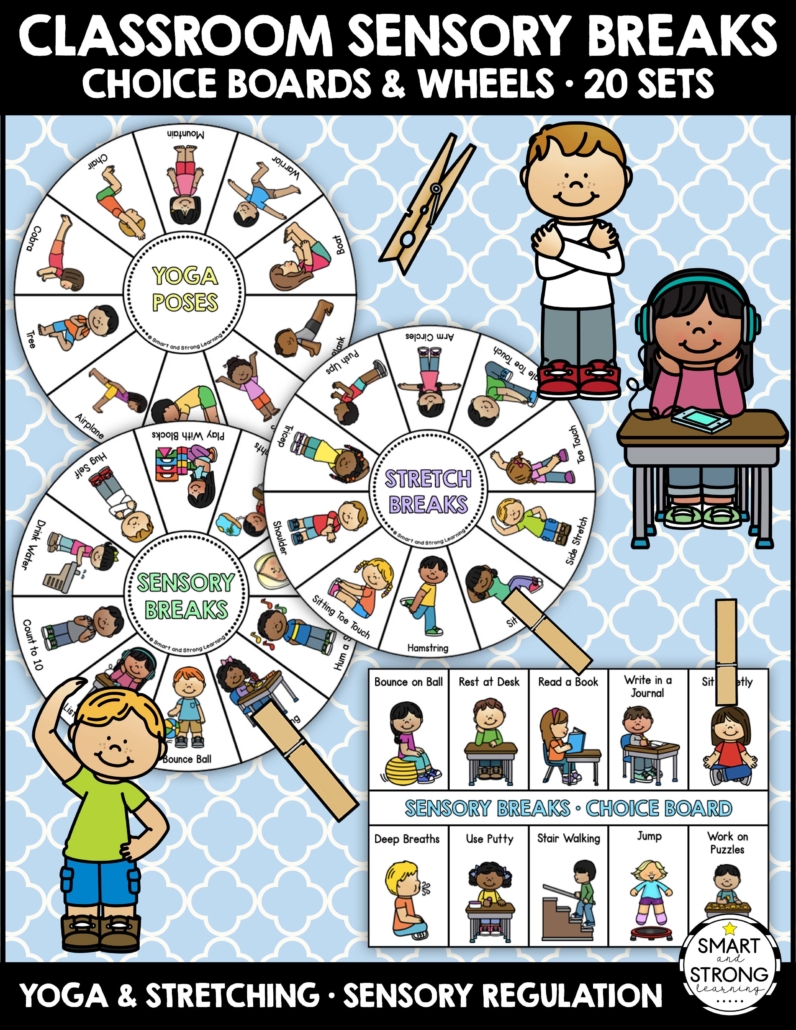
Sensory Choice Boards
SENSORY ACTIVITIES FOR YOUNG CHILDREN WITH AUTISM
Sensory activities for young children with autism can range from simple activities like finger painting and water play to more complex activities such as creating a sensory box filled with small toys of different shapes and textures. Sensory bins filled with different things like rice, beans, or even shaving cream can offer a great way for children to explore different sensations.
Ice cube trays can be used as a fine motor activity, where the child can practice transferring small items from one spot to another. Plastic bag kites are a fun activity that provides both tactile and visual stimulation. Using simple musical instruments, music therapy can stimulate auditory senses and improve communication skills.
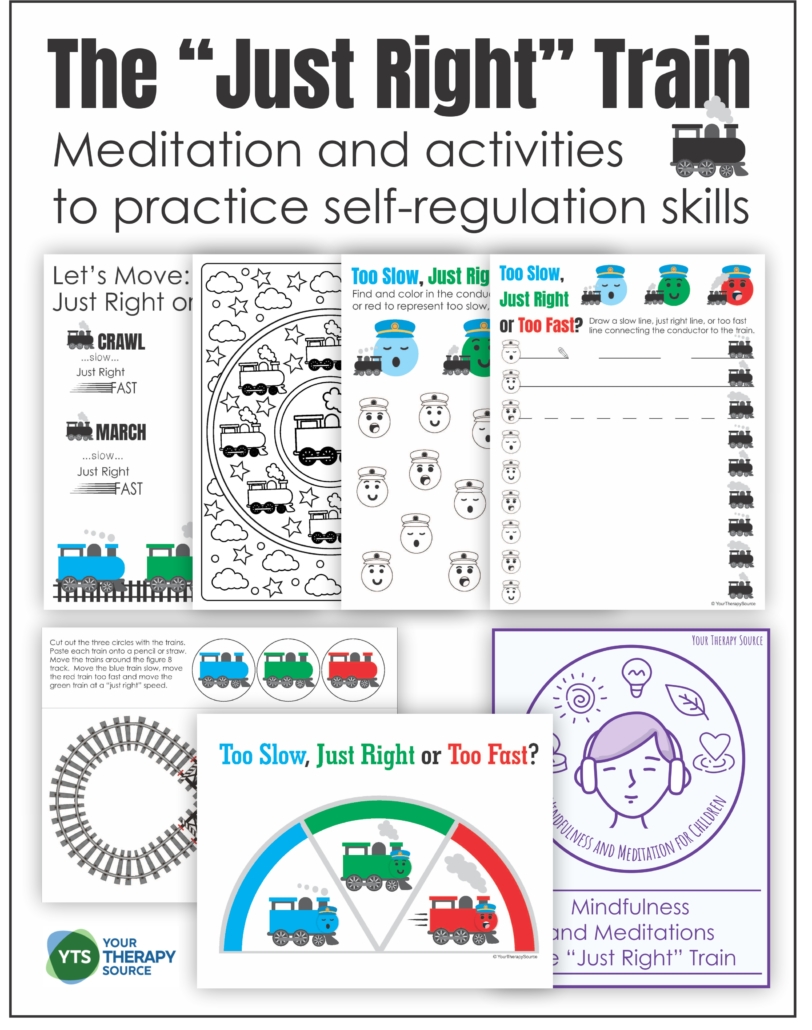
Self-Regulation Activity – “Just Right” Train
SENSORY ACTIVITIES FOR SCHOOL AGE STUDENTS WITH AUTISM
An excellent way for school-aged children to gain sensory input is through obstacle courses, which can be adjusted based on the child’s sense abilities. This is a fun way to work on both gross motor skills and problem-solving skills.
Nature walks provide a great sensory activity, offering different sounds, different smells, and different colors to explore. Sensory walks can be created in the school hallway with various textures on the floor for the child to experience. Sensory rooms with bubble tubes, ball pits, and heavy work activities can help with sensory integration and calming the nervous system.
SENSORY ACTIVITIES FOR TEENAGERS WITH AUTISM
For autistic teenagers, finding engaging sensory activities that simultaneously foster social skills, hand-eye coordination, and sensory stimulation can be a fantastic strategy. Here are some suggestions:
Engaging in activities like playing a team sport or video games can provide an ideal opportunity for sensory engagement and social interaction. These activities demand hand-eye coordination, which, when practiced regularly, can significantly improve their skills.
Water play can also offer a calming sensory experience for teenagers on the autism spectrum. However, consider activities such as washing a car, participating in water sports, or even a simple water gun fight to make it age-appropriate. These activities offer the sensory input of water while simultaneously being fun and socially engaging.
Cooking and baking are excellent activities that allow autistic teens to explore a range of textures and smells. They also have the added benefit of teaching life skills. From kneading dough to chopping vegetables, these tasks provide a variety of tactile experiences and can also help in developing fine motor skills. The result is a tasty treat or meal that gives a sense of accomplishment and can be shared with others.
Stressful situations often occur during teenage years, and having coping mechanisms at hand can be quite beneficial. Fidget toys, like stress balls, tangle toys, or fidget spinners, offer tactile stimulation and can help manage anxiety. They serve as a great tool for self-regulation and can easily be incorporated into their daily routines, helping them navigate their sensory experiences more comfortably.
Remember, each activity should be adjusted based on the teenager’s personal preferences, sensitivities, and abilities to ensure a positive and beneficial experience.
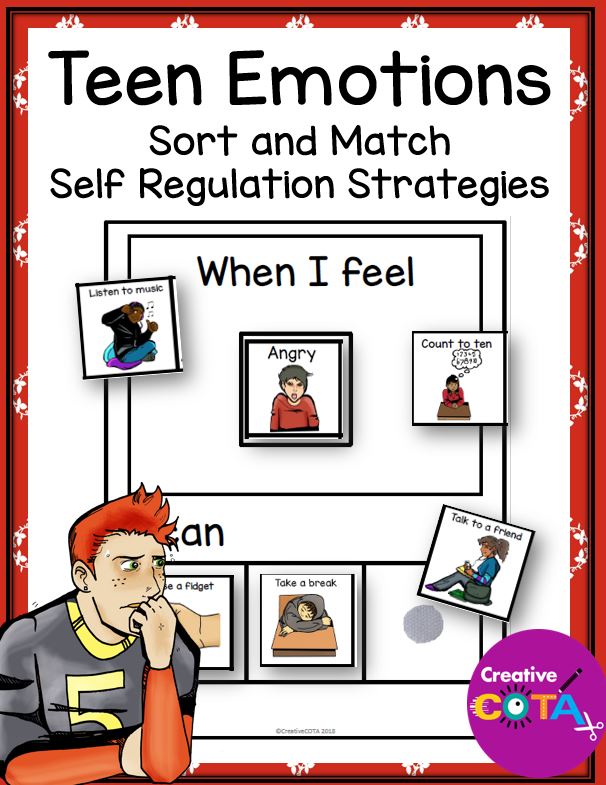
Teen Self-Regulation and Emotions Adapted Book
SENSORY ACTIVITIES FOR ADULTS WITH AUTISM
For adults with autism, sensory activities can take a more complex and functional form, providing both sensory stimulation and valuable life skills or hobbies.
Gardening is one such activity that engages several sensory systems. The feel of soil, the sight of colorful flowers, the sounds of nature, and the smell of fresh herbs provide diverse sensory stimulation. Beyond that, gardening offers the therapeutic benefits of connecting with nature and nurturing growth, making it an ideal hobby for many adults.
Rather than sensory toys, adults may prefer to use a range of specialized tools that cater to their sensory needs. For instance, weighted blankets can provide a calming deep pressure input, essential oils or scented candles can offer relaxing olfactory experiences, and noise-cancelling headphones can help manage auditory sensitivities.
Physical activities like yoga, tai chi, or regular gym workouts can be adapted to cater to adults’ sensory needs. These activities stimulate the vestibular and proprioceptive systems, supporting balance, body awareness, and spatial orientation. Moreover, regular exercise promotes overall physical health and wellness.
Art and craft activities extend beyond just being a great sensory activity for adults with autism. Whether it’s painting, pottery, sculpting, or knitting, these activities provide tactile stimulation and help enhance fine motor skills. They also contribute to cognitive development and emotional expression, offering a creative outlet that can be incredibly therapeutic.
Keep in mind that sensory needs and interests are unique to each individual, so these activities should be tailored accordingly. Understanding and incorporating these personal preferences can make sensory activities an enjoyable and beneficial part of an adult’s daily routine.
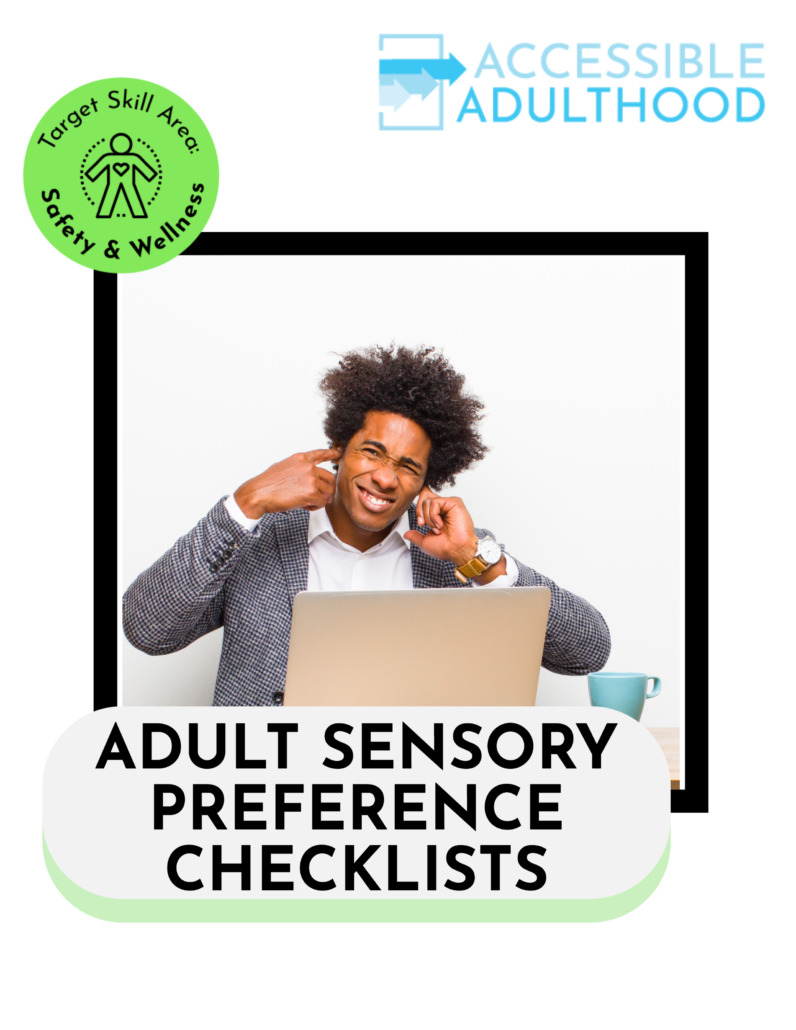
Adult Sensory Processing Preferences for Roommates
WHY EVERY SUGGESTION SHOULD BE INDIVIDUALIZED FOR THE PERSON WITH AUTISM
Each individual with autism has unique sensory needs and responses. What might be a great game for one person might cause sensory overload in another. Therefore, it’s crucial to individualize sensory activities for each person with autism. Special needs should always be considered when choosing different activities. It’s also good to involve family members in these activities to foster better social skills and interaction. Read more about teaching strategies for children with autism.
WHERE TO GET HELP FOR INDIVIDUALS WITH AUTISM AND SENSORY PROCESSING DIFFICULTIES
Occupational therapists are often an excellent resource for helping individuals with autism and sensory processing difficulties. They can offer personalized recommendations for sensory activities based on each person’s specific needs and sensory profiles. Therapists can also assist in creating a sensory room at home or suggest appropriate sensory toys and tools.
In conclusion, sensory activities for autism offer an effective and fun way to help individuals on the spectrum navigate their sensory experiences better. By carefully selecting activities that cater to specific sensory needs, we can foster a more inclusive and understanding environment for people with autism.
MORE EXAMPLES OF SENSORY ACTIVITIES FOR AUTISM
It’s important to remember that the age ranges provided are broad and every individual with autism is unique. These activities should be personalized to meet each individual’s specific sensory needs and developmental stage. Keep safety as the paramount concern, particularly with younger children. Babies, toddlers, and some preschoolers should be closely supervised during sensory activities and should not be exposed to small items due to choking hazards. Always ensure that the activities are age-appropriate and safe for the individual’s developmental stage. Let’s explore some suitable sensory activities across various age ranges.
0-5 Years Old
- Finger painting with non-toxic paints of different colors
- Sensory bin filled with soft materials such as cotton balls or fabric scraps
- Playing with water beads in a sensory bottle
- Musical instruments for auditory stimulation
- Play-dough or slime for tactile input and fine motor skill development
- Using a shaving cream or whipped cream for fun tactile play
- Filling and pouring water into different containers during bath time
- Tactile storybooks with different textures to touch and feel
- Sensory walk with various floor textures to stimulate the feet and balance
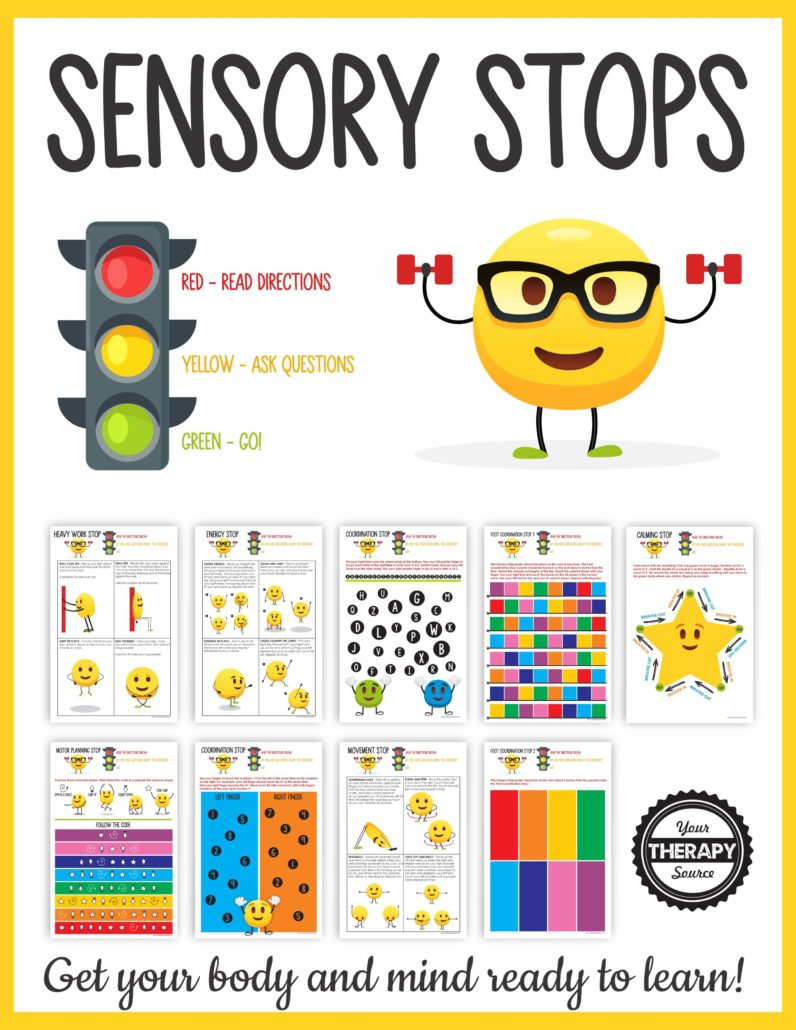
Sensory Path for School and Home – PRINTED version
5-10 Years Old
- Obstacle courses involving climbing, jumping, and crawling for proprioceptive input
- Nature walks to engage with different sounds, smells, and textures
- Puzzles to enhance hand-eye coordination and problem-solving skills
- Sand play for tactile stimulation
- Cooking simple recipes for olfactory and gustatory stimulation
- Balloon volleyball for visual tracking and gross motor skills
- DIY sensory bottles with glitter and small items for visual exploration
- Gardening activities to provide tactile input and teach about different plants
- Dancing to different types of music for auditory and vestibular stimulation
- Drawing with chalk on pavement for visual and tactile stimulation
10-13 Years Old
- Baking activities for sensory exploration and practical life skills
- DIY craft projects such as making jewelry or model building
- Yoga or simple exercise routines for proprioceptive input
- Board games that require tactile interaction and social skills
- Interactive video games for hand-eye coordination
- Making homemade scented candles or soap for olfactory stimulation
- Painting for tactile and visual stimulation
- Reading books aloud in a group setting for auditory and social stimulation
- Creating a DIY calm down bottle with glitter and food coloring
- Playing catch with a weighted ball for proprioceptive feedback
13-19 Years Old
- DIY home decoration projects such as creating wall hangings or collages
- Learning to play a musical instrument for auditory stimulation and fine motor skill development
- Cooking or baking more complex recipes
- Gardening tasks such as weeding, watering, and planting
- Photography or painting for visual stimulation
- Yoga or other fitness routines for proprioceptive and vestibular input
- Computer games or apps for visual and auditory stimulation
- Writing or journaling activities for fine motor skills and emotional regulation
- Simple car maintenance activities like washing a car or inflating tires
- Making homemade lip balm or lotion for tactile and olfactory stimulation
20 Years Old and Up
- Knitting or crochet for tactile stimulation and fine motor skill development
- Listening to music or audiobooks for auditory stimulation
- Simple home repair or improvement tasks for tactile and problem-solving skills
- Cooking or baking favorite recipes
- Walking or jogging in a park for vestibular stimulation
- Painting or drawing activities for visual and tactile stimulation
- Writing letters or emails to friends and family members for social interaction
- Gardening or plant care activities for tactile input and stress relief
- Yoga or meditation for proprioceptive input and emotional regulation
- Engaging in a hobby such as model building or stamp collecting for visual and tactile stimulation
SUMMARY SENSORY ACTIVITIES AND AUTISM
sensory activities play a pivotal role in supporting individuals with autism, providing crucial sensory input that can help regulate their sensory systems. These activities not only aid in managing sensory issues but also help to foster important skills such as fine motor skills, hand-eye coordination, social skills, and cognitive development. Yet, the most vital aspect to remember is that autism is a spectrum disorder. What works for one individual may not necessarily work for another. Therefore, a personalized approach is crucial in creating a sensory plan. Respecting and acknowledging each individual’s unique sensory needs, preferences, and thresholds is essential. Sensory activities for autism should always be tailored to the individual, keeping their safety, comfort, and enjoyment at the forefront. This will ensure the effectiveness of the sensory activities and enhance their overall wellbeing, promoting a more balanced and fulfilling life.

KEY POINTS
- Sensory activities are vital in supporting individuals with autism as they provide necessary sensory input, aid in skill development, and offer ways to manage sensory sensitivities.
- It’s crucial to personalize and adapt sensory activities according to the individual’s unique needs, preferences, and age. The effectiveness of any sensory activity lies in its suitability to the individual.
- Prioritizing the individual’s safety, comfort, and enjoyment during sensory activities ensures these experiences are beneficial and engaging rather than overwhelming or distressing.
- Accommodations respecting sensory preferences, such as moderating exposure to bright lights or loud noises, can significantly enhance the comfort of individuals with autism and facilitate their engagement in various activities.
- Sensory activities should never be forced upon an individual with autism. Instead, they should be presented as options, and individual sensory processing should always be respected, ensuring the activities are engaged in at their own comfort level.


